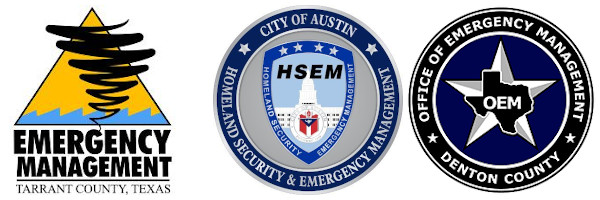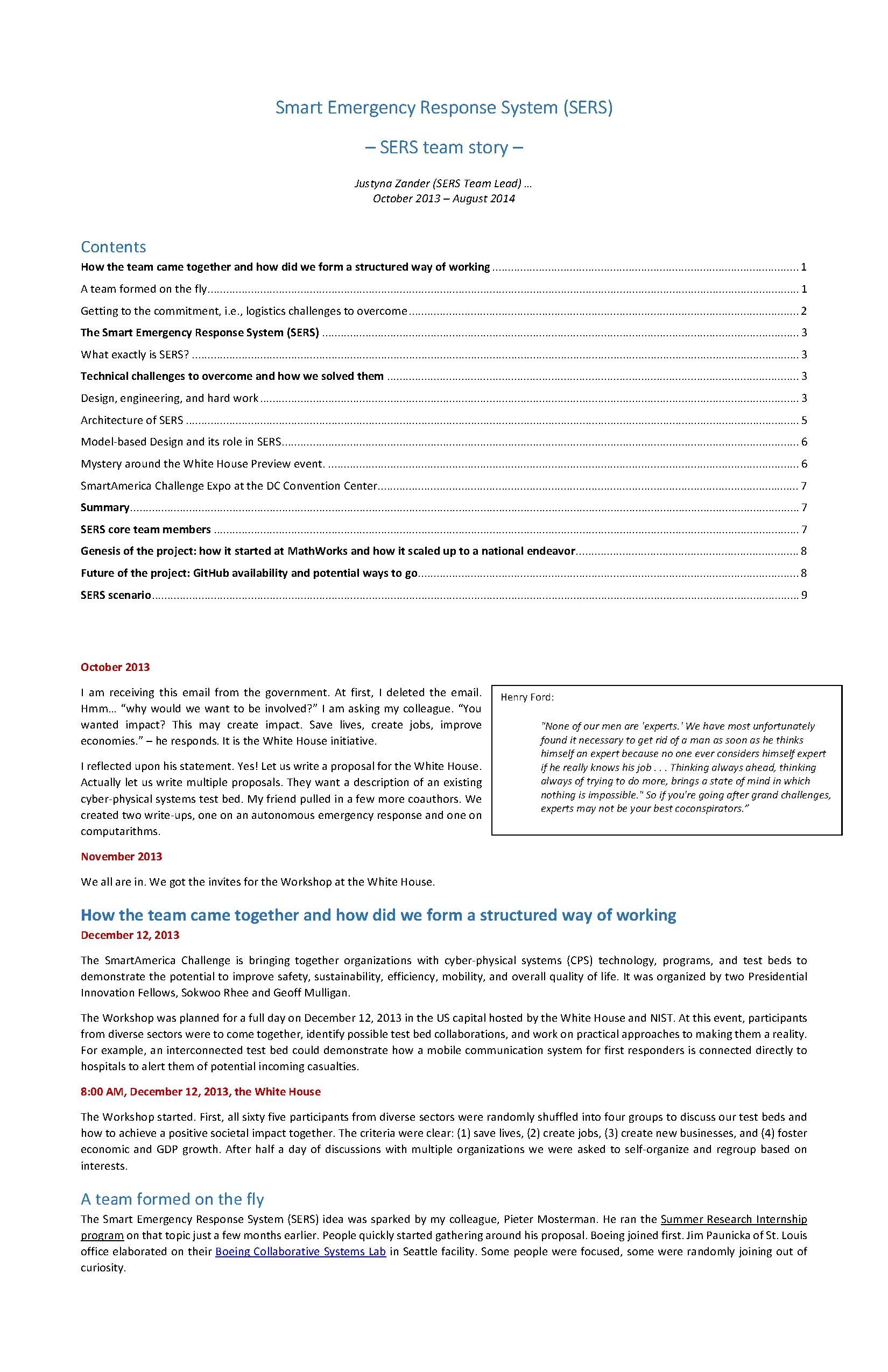Smart Emergency Response System - SERS: Difference between revisions
Jump to navigation
Jump to search
No edit summary |
No edit summary |
||
| (One intermediate revision by the same user not shown) | |||
| Line 24: | Line 24: | ||
|standards=* The project provides case studies on quantifying the performance of a variety of on-demand emergency communication technologies. | |standards=* The project provides case studies on quantifying the performance of a variety of on-demand emergency communication technologies. | ||
* The project involves testing in multiple emergency exercises at a variety of scales, and is expected to provide insights on the replicability, scalability, and sustainability of the drone-carried communication infrastructure being developed. | * The project involves testing in multiple emergency exercises at a variety of scales, and is expected to provide insights on the replicability, scalability, and sustainability of the drone-carried communication infrastructure being developed. | ||
|cybersecurity=TBD | |||
|impacts=* Save lives: Reduced emergency response time, real-time information sharing; reduced risk; optimized resource planning | |impacts=* Save lives: Reduced emergency response time, real-time information sharing; reduced risk; optimized resource planning | ||
* Job creation: public service experts; robot operators; drone operators; usability experts | * Job creation: public service experts; robot operators; drone operators; usability experts | ||
| Line 36: | Line 37: | ||
# Demonstration in the controlled wildfire exercise at the Denton County | # Demonstration in the controlled wildfire exercise at the Denton County | ||
# Demonstration through participating in the multi-city disaster drill in the Dallas-Fort Worth area | # Demonstration through participating in the multi-city disaster drill in the Dallas-Fort Worth area | ||
|chapter=Emergency Support Functions | |||
|supercluster=Public Safety | |supercluster=Public Safety | ||
|year=2017 | |year=2014, 2015, 2016, 2017 | ||
|title=Smart Emergency Response System (SERS) | |title=Smart Emergency Response System (SERS) | ||
}} | }} | ||
Latest revision as of 05:39, January 25, 2023
| Smart Emergency Response System - SERS | |
|---|---|

| |
 Emergency Response Tarrant | |
| Team Organizations | University of Texas at Arlington University of North Texas Denton Fire Department Denton municipal Electric Emergency Pre-paredness Department of the North Central Texas Council of Governments Tarrant County Fire Service Training Center Austin Fire Department |
| Team Leaders | Yan Wan Shengli Fu |
| Participating Municipalities | Tarrant TX Denton TX Austin TX |
| Status | Launched |
| Document | 
|
Description
The success of emergency response operations critically relies on the efficiency of emergency communication infrastructure. This project aims to mature and test the drone-carried on-demand broadband communication infrastructure for emergency use and quantify its benefit compared with existing on-demand emergency communication technologies.
Challenges
Practical provision of on-demand drone-carried robust long-distance WiFi communication infrastructure
Solutions
Acceleration of technology transfer through close collaboration with Emergency Preparedness Departments in Texas
Major Requirements
- Mature the prototype drone WiFi system to improve the robust long-distance drone-to-drone communication.
- Plan emergency testing scenarios through close collaboration with first responders, coordinators and directors.
- Deploy and test at multiple emergency exercises, including
- full-city tornado exercise at the Denton City in May,
- controlled wildfire exercise at the Denton County in June, and
- multi-city disaster drill in the Dallas-Fort Worth area in November.
- Quantitatively analyze the performance improvement for emergency communication using the drone-carried system.
Performance Targets
| Key Performance Indicators (KPIs) | Measurement Methods |
|---|---|
|
The performance improvements include but not limit to the following:
|
The performance impact is measured through multiple emergency exercises. |
Standards, Replicability, Scalability, and Sustainability
- The project provides case studies on quantifying the performance of a variety of on-demand emergency communication technologies.
- The project involves testing in multiple emergency exercises at a variety of scales, and is expected to provide insights on the replicability, scalability, and sustainability of the drone-carried communication infrastructure being developed.
Cybersecurity and Privacy
TBD
Impacts
- Save lives: Reduced emergency response time, real-time information sharing; reduced risk; optimized resource planning
- Job creation: public service experts; robot operators; drone operators; usability experts
- New businesses: On-demand network service; multi-drone applications
- Economic Growth: Service time reduction; safe air transportation; decrease in maintenance expenses
Demonstration/Deployment
- Phase I Pilot/Demonstration:
- Demonstration made with the Discovery Channel Canada on three emergency scenarios: rescue on flooding water, car accident, and wildfire
- Demonstration with the Denton City Fire Department through participating in the full city tornado exercise in May 2016
- Phase II Deployment:
- Demonstration in the controlled wildfire exercise at the Denton County
- Demonstration through participating in the multi-city disaster drill in the Dallas-Fort Worth area